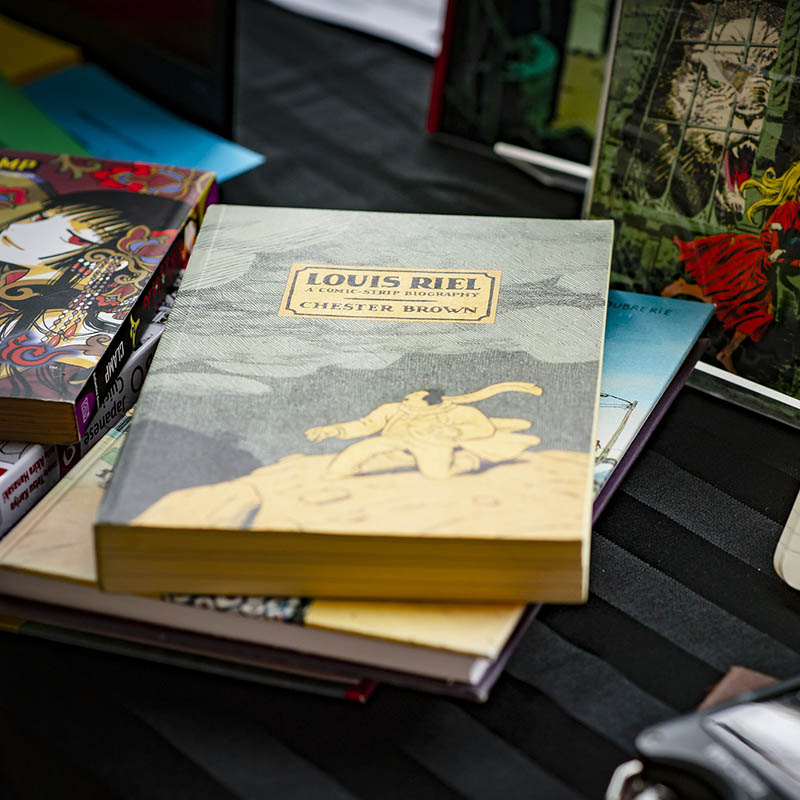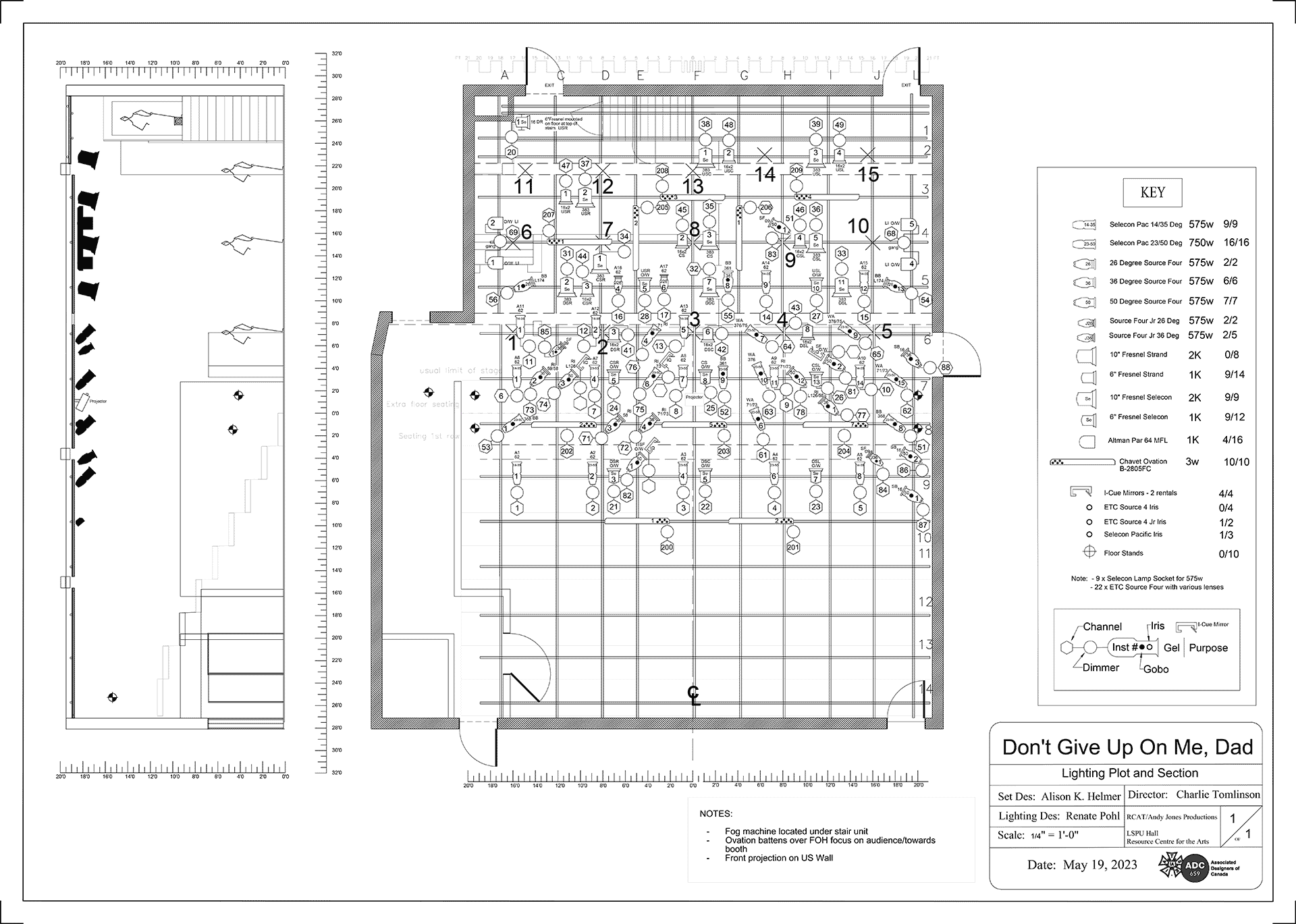Research Report: 2022
▼ Choose a report:

Powered by Research & Graduate Studies

Powered by Arts and Social Science

Powered by Science and the Environment


Caption: Lighting designs for "Don't Give Up on Me, Dad."
"Don't Give Up on Me, Dad," a one-man show written and performed by renowned Newfoundland artist Andy Jones, is a loving and poignant tribute to his son, Louis, who died by suicide in 2014. This deeply personal production takes the audience through Louis' struggles with mental health and shares Mr. Jones's own journey of grief and healing.

Renate Pohl
Grenfell's theatre chair, Prof. Renate Pohl, was the lighting designer for Don't Give Up on Me, Dad, which was directed and dramaturged by Charlie Tomlinson Prof. Pohl worked on the lighting design as the script continued to be developed throughout 2022-2023. The show opened and ran at the LSPU Hall in St John's May 31-June 11, 2023, produced by RCA Theatre Company and Andy Jones Productions. Here are her thoughts on designing with empathy.
I think that in approaching the design of any show, it is important to find empathy for the playwright's story. This will ultimately support the audience connection with the story. When you are able to work with the playwright/actor and dramaturg/director for part of the script development, you have the gift of being able to ask questions to be able to understand their intentions moment-to-moment more clearly. That is why art is so important - it allows us to step into other people's stories for a moment, opens up our consciousness a tiny bit, and hopefully widens our capacity for compassion. Andy explicitly asks for this during the show. While exploring an incredibly personal and important topic, he states the goal of the show - that in its creation and witness, we stretch to forget ourselves (i.e. our constructed egoic identity) for just one second longer than we could before. Ultimately, the message I took from this is that empathy is always there if we can get out of our own way. We have infinite capacity to treat people who carry the burden of mental health challenges with compassion. However, given our human nature, we have to work to develop this capacity.

Lighting plot design for "Don't Give Up on Me, Dad."
In developing the lighting design for this production, I wanted to ensure that the story from Andy's perspective was front and centre. The script gave me a huge amount of guidance right from the first draft that I encountered, as Andy had included many descriptions of the layers of story which he imagined to be created from light. This was included in both the stage directions as well as the spoken text. The story layers included a basement in a grocery store used as a rehearsal space, a lecture hall, and a blueprint of his son Louis' apartment drawn in chalk on the floor which at times represented different rooms (a simple and beautiful set design by Alison K. Helmer, a Grenfell Theatre graduate). All this was seen through a portal, with an atmospheric sense of the universe shifting and changing throughout the entire play.
At times the atmosphere moved in a beautiful way, purposefully eliciting "oohs" and "aahs" from the characters - I used moving mirrors to sweep soft aqua and magenta "rivers" of light across the stage, in rhythm with the acting. At other times, it appeared terrifying, as if the world itself appeared to be splitting apart and ending - for this I photographed the set and manipulated the image to shake like an earthquake, projecting the set back onto itself. Working with Andy and Charlie, I checked in with them step-by-step to ensure that my understanding of the atmosphere created by lighting was working for them to help tell the story, and not confusing it. Light has many functions on stage, two of the main ones being to highlight the performer and to set a sense of place. In this show, I felt like the light did so much more than this - it represented compassion itself.
At the end of the play, just as we think the world is ending, cracks of light open up that widen into a golden glow that eventually engulfs the entire world, including the audience. While this was a more obvious use of the metaphor of light as compassion, I like to think that the nature of compassion and empathy is always there with light. In the sadder moments of quiet or reflection, the light understood to dim to a deep mottled blue, to hold the appropriate space for the story. In the moments of fun or joy it knew to brighten up to hold up Andy's goofy jokes to the audience. In moments of wonder it floated across and up the stage, encouraging the audience to tilt their heads up, like we do to view the stars. Always, the light knew to hold Andy in its embrace, spotlighting him to give him courage and support to tell his story. I believe light is a kind of character with emotional intelligence. My job as a lighting designer is simply to connect that emotional intelligence, or empathy, with the technical aspects that bring it to life.